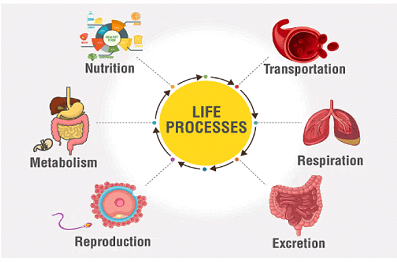What is corrosion class 10
Understanding the Chemistry Behind Metal Degradation
What is Corrosion?
Corrosion is the gradual deterioration of materials (usually metals) by chemical or electrochemical reaction with their environment. It is essentially a natural process that converts a refined metal into a more chemically stable form such as its oxide, hydroxide, or sulfide state.
The term “corrosion” comes from the Latin word “corrodere,” which means “to gnaw away.” This perfectly describes how corrosion slowly eats away at metal structures, causing them to weaken and eventually fail.
Exam Tip:
Remember that corrosion is fundamentally an oxidation-reduction (redox) reaction where the metal is oxidized by losing electrons while another substance (usually oxygen) is reduced by gaining those electrons.
The Chemistry of Corrosion
At its core, corrosion is an electrochemical process involving the transfer of electrons between a metal and its surrounding environment. This process requires both an anode (where oxidation occurs) and a cathode (where reduction occurs).
Iron Corrosion (Rusting): A Classic Example
The corrosion of iron, commonly known as rusting, is perhaps the most familiar form of corrosion. The chemical reactions involved are:
The reddish-brown rust that forms is actually hydrated iron(III) oxide (Fe(OH)3), which eventually dehydrates to form Fe2O3·nH2O.
Example: Iron Nail in Water
When an iron nail is left in water exposed to air, the following process occurs:
- The tip of the nail becomes anodic (oxidation): Fe → Fe2+ + 2e–
- The head of the nail becomes cathodic (reduction): O2 + 2H2O + 4e– → 4OH–
- The iron(II) ions react with hydroxide ions: Fe2+ + 2OH– → Fe(OH)2
- The iron(II) hydroxide is further oxidized: 4Fe(OH)2 + O2 + 2H2O → 4Fe(OH)3
- The hydrated iron(III) oxide is what we see as rust
Types of Corrosion
Corrosion can manifest in various forms, each with unique characteristics and mechanisms:
| Type of Corrosion | Description | Example |
|---|---|---|
| Uniform Corrosion | Occurs evenly over the entire surface of the metal | Rusting of unprotected iron sheets |
| Pitting Corrosion | Localized corrosion that creates small holes in the metal | Stainless steel exposed to chloride environments |
| Galvanic Corrosion | Occurs when two dissimilar metals are in electrical contact | Zinc sacrificially corroding to protect steel in galvanized products |
| Crevice Corrosion | Occurs in confined spaces where oxygen is limited | Under washers, gaskets, bolt heads |
| Intergranular Corrosion | Corrosion at grain boundaries in a metal | Sensitized stainless steels |
| Stress Corrosion Cracking | Cracking due to combined stress and corrosive environment | Brass in ammonia environments |
Exam Tip:
Questions often ask you to identify the type of corrosion based on a description or image. Focus on the unique features of each type. Galvanic corrosion is particularly important to understand, as it involves the electrochemical series and relative reactivities of metals.
Factors Affecting Corrosion Rate
Several factors influence how quickly a metal corrodes:
- Presence of Electrolytes: Salt water accelerates corrosion by increasing conductivity. This is why cars rust faster in coastal areas or on roads treated with salt during winter.
- Moisture/Humidity: Water is essential for most electrochemical corrosion reactions. Higher humidity leads to faster corrosion rates.
- Temperature: Higher temperatures generally accelerate chemical reactions, including corrosion.
- pH Level: Most metals corrode faster in acidic environments (low pH) than in neutral or alkaline conditions.
- Oxygen Concentration: Oxygen is often the oxidizing agent in corrosion, so its availability affects corrosion rates.
- Metal Purity: Impurities in metals can create local electrochemical cells that accelerate corrosion.
- Physical Stress: Stressed metal parts corrode faster than unstressed ones.
Experimental Observation:
If you place three iron nails in three different test tubes:
- Test tube 1: Dry air only
- Test tube 2: Boiled (oxygen-free) water
- Test tube 3: Ordinary tap water
You’ll observe that the nail in test tube 3 rusts the fastest because it has both water and oxygen, which are essential for the rusting process. The nail in test tube 1 (dry air) and test tube 2 (oxygen-free water) will show minimal or no rusting.
Real-Life Examples of Corrosion
Corrosion is ubiquitous in our daily lives. Here are some common examples:
Rusty Vehicles
Cars and bicycles exposed to moisture, salt, and air develop rust, especially in areas where water can accumulate. The rusting process is accelerated in coastal areas and regions where roads are salted during winter.
Green Patina on Copper
The Statue of Liberty was originally copper-colored but developed its characteristic green patina over time due to the oxidation of copper to form copper carbonate and copper hydroxide.
Blackening of Silver
Silver jewelry and silverware tarnish when exposed to air containing hydrogen sulfide (H2S), forming a black layer of silver sulfide.
Corrosion of Iron in Soil
Underground pipelines and storage tanks made of iron corrode due to moisture and various salts present in soil. This is a major concern for infrastructure like water supply systems and oil pipelines.
Exam Tip:
Being able to provide specific real-life examples of corrosion and explain the chemical processes involved can earn you high marks in exams. Try to memorize at least three different examples with their corresponding chemical equations.
Methods to Prevent Corrosion
Understanding how to prevent corrosion is crucial from both practical and examination perspectives. Here are the main methods used to prevent or minimize corrosion:
1. Barrier Protection
Create a physical barrier between the metal and the environment to prevent contact with oxygen, moisture, and other corrosive substances.
- Painting
- Plastic coating
- Grease application
- Oil coating
- Enamel coating
2. Galvanization
Coating iron or steel with a layer of zinc. Zinc acts as a sacrificial metal, corroding first and protecting the underlying metal.
Chemistry Insight: Zinc is more reactive than iron (higher in the electrochemical series), so it oxidizes preferentially, protecting the iron beneath it.
3. Cathodic Protection
Connect the metal to be protected to a more reactive metal, which will corrode instead (sacrificial anode).
Examples:
- Magnesium or zinc anodes attached to underground pipelines
- Zinc blocks attached to ship hulls
4. Alloying
Creating alloys that are more resistant to corrosion than pure metals.
- Stainless steel (iron + chromium + nickel)
- Brass (copper + zinc)
- Bronze (copper + tin)
5. Corrosion Inhibitors
Chemicals that slow down corrosion when added to a liquid or gas in contact with the metal.
Examples: Chromates, phosphates, or organic compounds added to cooling systems, water pipes, etc.
6. Design Considerations
Designing structures to minimize water accumulation and ensure proper drainage helps prevent corrosion.
- Avoiding crevices where water can collect
- Ensuring adequate ventilation
- Using compatible metals to prevent galvanic corrosion
Economic and Environmental Impact of Corrosion
Corrosion has significant economic and environmental impacts that extend beyond the obvious material damage:
Economic Impact
- Costs associated with replacing corroded structures
- Maintenance expenses for preventive measures
- Production losses due to equipment failure
- Energy losses due to reduced efficiency of corroded equipment
- According to studies, the global cost of corrosion is estimated to be approximately 3-4% of a nation’s GDP
Environmental Impact
- Resource depletion due to the need to replace corroded materials
- Energy consumption associated with manufacturing replacement parts
- Environmental contamination from leaked substances (e.g., oil pipelines)
- Some corrosion prevention methods may use toxic substances
- Waste generation when corroded materials are discarded
Important Exam Questions on Corrosion
Here are some common types of questions that appear in exams related to corrosion:
1. Reaction Mechanisms
Sample Question: Write the balanced chemical equations for the corrosion of iron in the presence of water and oxygen.
Expected Answer:
Anodic reaction: Fe → Fe2+ + 2e–
Cathodic reaction: O2 + 2H2O + 4e– → 4OH–
Overall reaction: 2Fe + O2 + 2H2O → 2Fe(OH)2
Further oxidation: 4Fe(OH)2 + O2 + 2H2O → 4Fe(OH)3
2. Prevention Methods
Sample Question: Explain how galvanization protects iron from corrosion. Include relevant chemical principles in your answer.
Expected Answer:
Galvanization involves coating iron with zinc. Zinc is more reactive than iron (higher in the electrochemical series) and acts as a sacrificial metal. When exposed to a corrosive environment, zinc corrodes preferentially:
Zn → Zn2+ + 2e–
This protects the underlying iron even if the zinc coating is scratched, as zinc will continue to corrode preferentially until it is completely consumed. This is an example of cathodic protection.
3. Factors Affecting Corrosion
Sample Question: A piece of iron corrodes faster in salt water than in distilled water. Explain why, using appropriate chemical principles.
Expected Answer:
Salt (NaCl) in water dissociates to form Na+ and Cl– ions, making the solution more conductive. This enhanced conductivity facilitates the flow of electrons from the anodic to the cathodic regions, accelerating the electrochemical corrosion process. Additionally, chloride ions can penetrate protective oxide layers on the metal surface, exposing fresh metal to the corrosive environment. Salt water also typically contains more dissolved oxygen than distilled water, providing more oxidizing agent for the cathodic reaction.
4. Identifying Types of Corrosion
Sample Question: A brass fitting is connected to an iron pipe, and after some time, severe corrosion is observed at the junction. Identify and explain the type of corrosion occurring.
Expected Answer:
This is an example of galvanic corrosion. When two dissimilar metals (brass and iron) are in electrical contact and exposed to an electrolyte (such as moisture), they form a galvanic cell. In this case, iron is more active (anodic) than brass, so it corrodes preferentially. Electrons flow from the iron (anode) to the brass (cathode), accelerating the corrosion of iron near the junction. This is why severe corrosion is observed at the connection point.
Exam Strategy:
When answering questions about corrosion:
- Always include relevant chemical equations
- Explain electrochemical principles involved
- Mention both anodic and cathodic reactions
- Link theory to real-world examples when possible
- Discuss prevention methods in terms of how they interrupt the corrosion process
Summary of Key Points
- Definition: Corrosion is the deterioration of metals due to chemical or electrochemical reactions with their environment.
- Chemical Basis: Corrosion is fundamentally a redox reaction, where the metal is oxidized (loses electrons) and another substance (usually oxygen) is reduced (gains electrons).
- Rust Formation: Iron corrosion (rusting) involves multiple steps, ultimately forming hydrated iron(III) oxide (Fe(OH)3 or Fe2O3·nH2O).
- Essential Conditions: Most corrosion requires both oxygen and water to occur efficiently.
- Types of Corrosion: Include uniform corrosion, pitting corrosion, galvanic corrosion, crevice corrosion, and intergranular corrosion.
- Factors Affecting Rate: Electrolytes, moisture, temperature, pH, oxygen concentration, metal purity, and physical stress all influence corrosion rates.
- Prevention Methods: Include barrier protection, galvanization, cathodic protection, alloying, corrosion inhibitors, and design considerations.
- Economic Impact: Corrosion costs nations approximately 3-4% of their GDP annually.


